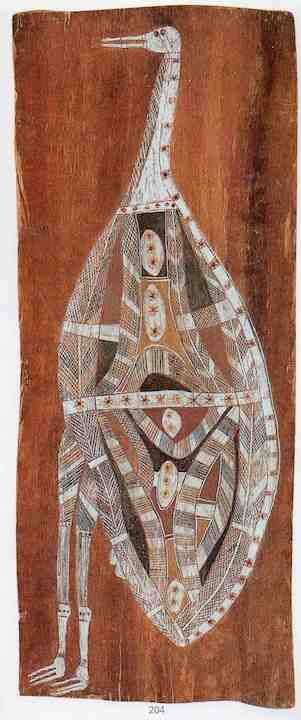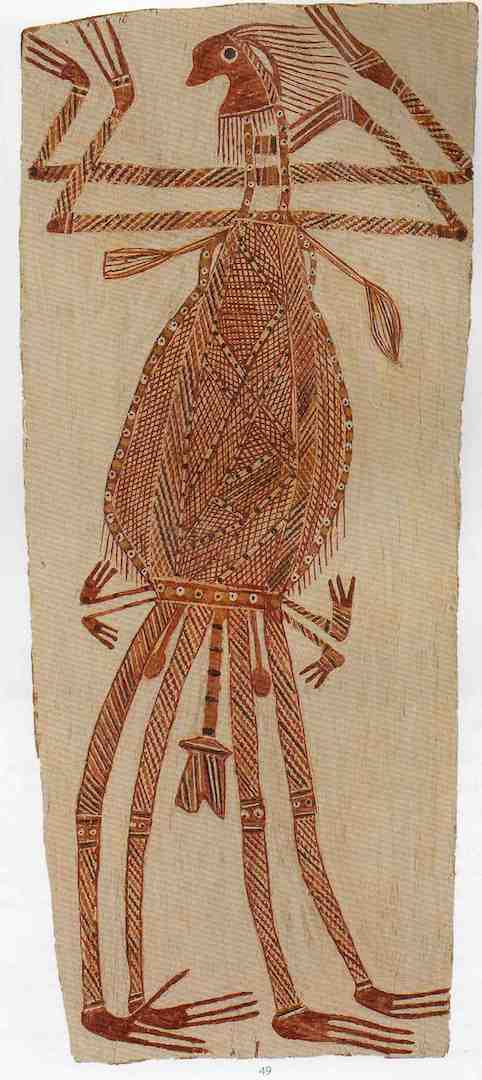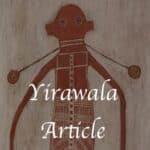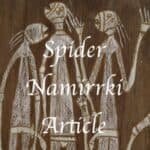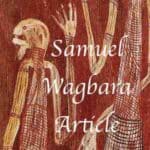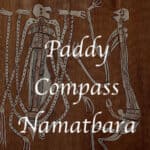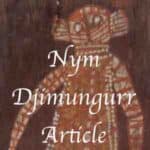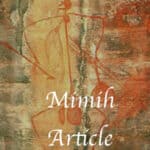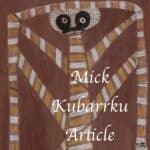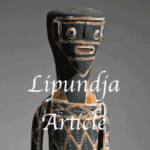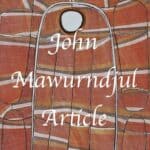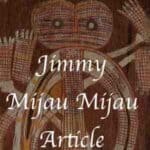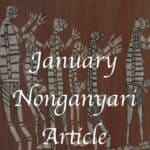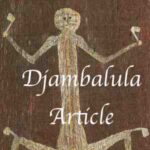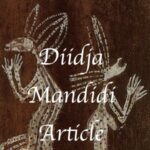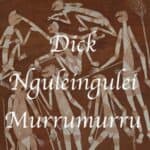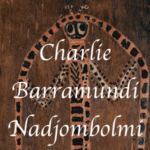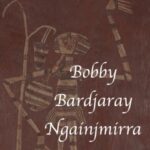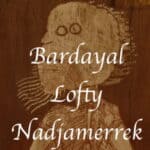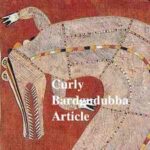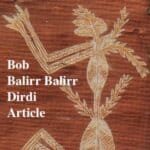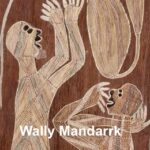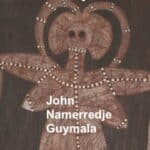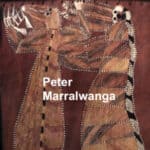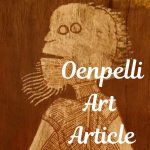Yirawala Artworks
Yirawala Artworks are not random. They draw on an in-depth knowledge of folk law and traditional spiritual beliefs. While fascinating in their own right a deeper understanding of the images portrayed adds a sense of depth to his art.
I am an avid collector of Yirawala artworks and if you have an example and you are considering parting with it please contact me.
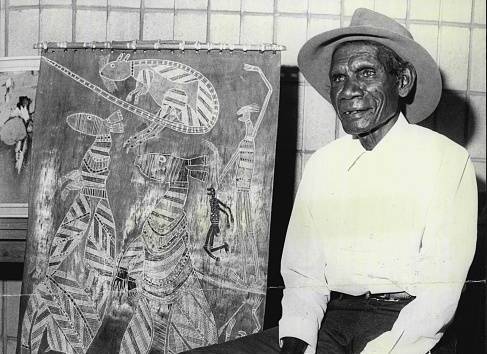
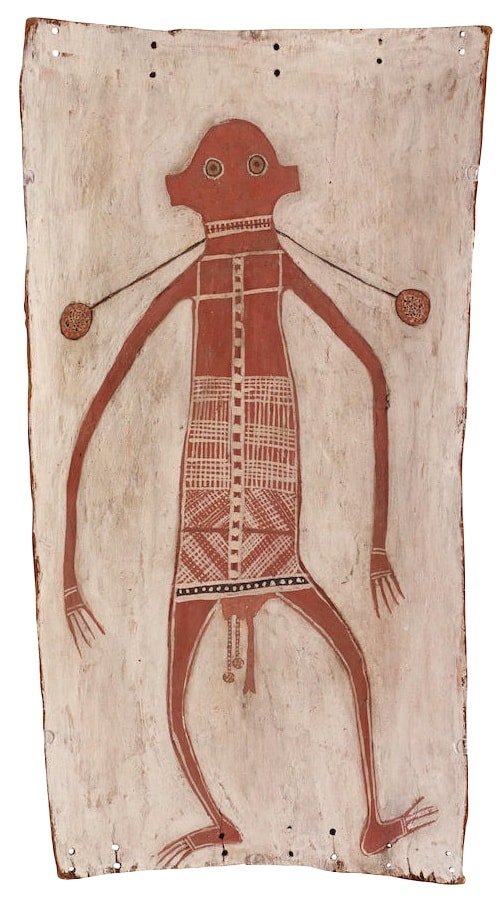
Other Painters of Luma Luma include Bobby Ngainjmirra Dick Murrumurru and Peter Marralwanga
Yirawala Artwork Luma Luma
Mardayin ceremony
Artwork by Yirawala of the Rainbow Serpent
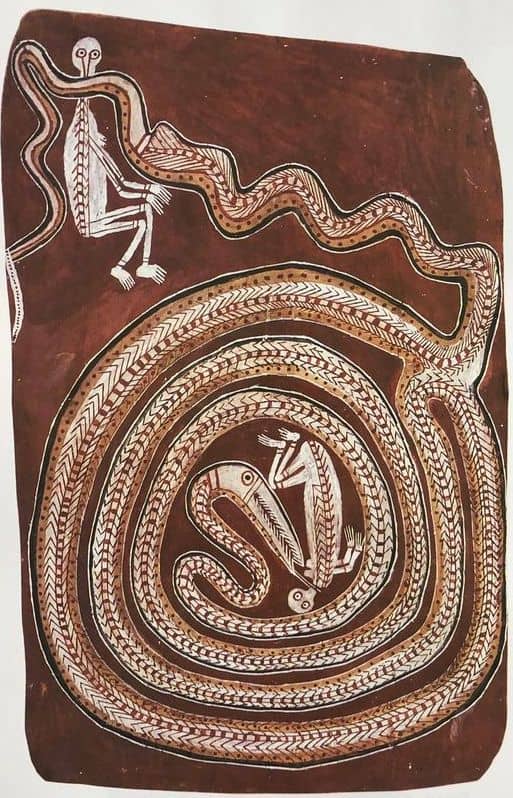
Other Painters of the Rainbow Serpent include Lofty Nadjamerrek and John Namerredje Guymala
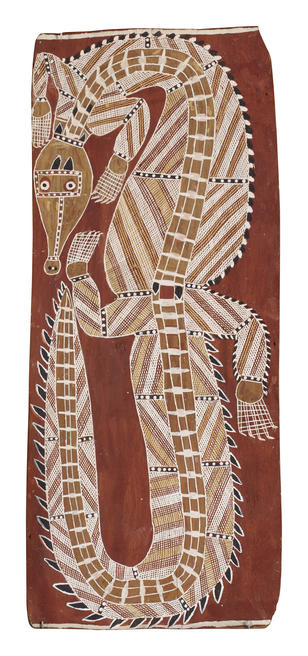
The Sacred crocodile Namanjwarre
Other painters of Namanjwarre
Other artists who painted Namanjewarra include John Mawundjul, Mick Kubarrku and Curly Bardkadubbu
References and additional reading
Mimih and Kangaroo
This painting relates to a traditional story of the meeting of Mimih by a hunter called Djala.
Djala and his heavily pregnant wife lived near the rocky escarpment know to be the home of the Mimih. The Mimih were a tall but very slender form of spirit people who lived hidden in caves and had dangerous magic.
Djala went hunting and was tracking a large kangaroo and near sunset he discovered a Mimih had killed the kangaroo he was tracking. Having seen the Mimih kill the kangaroo with his spear Djala complimented the Mimih on his skill. The Mimih called Kaman invited Djala back to his camp to share in the kangaroo meat. Djala was hesitant because he knew the legend that if a Mimih came in possession of your hair or sperm they could work magic on him.
The Mimih blew upon a rockface and it split in two leaving a passage to the Mimih secret glade. In the grassy glade Kangaroos grazed unfrightened and at the far end of the glade was a cave. In front of the cave other Mimih were singing and dancing.
Realizing if he ate the magical food he would never leave the camp and see his wife again Djala tried to leave. He asked politely if he could take a section of the kangaroo and walk back to his camp. Kaman put him off and insisted he stay the night.
In the early morning by the light of the stars, Djala crept out of the Mimih cave and glade and returned home to his wife.
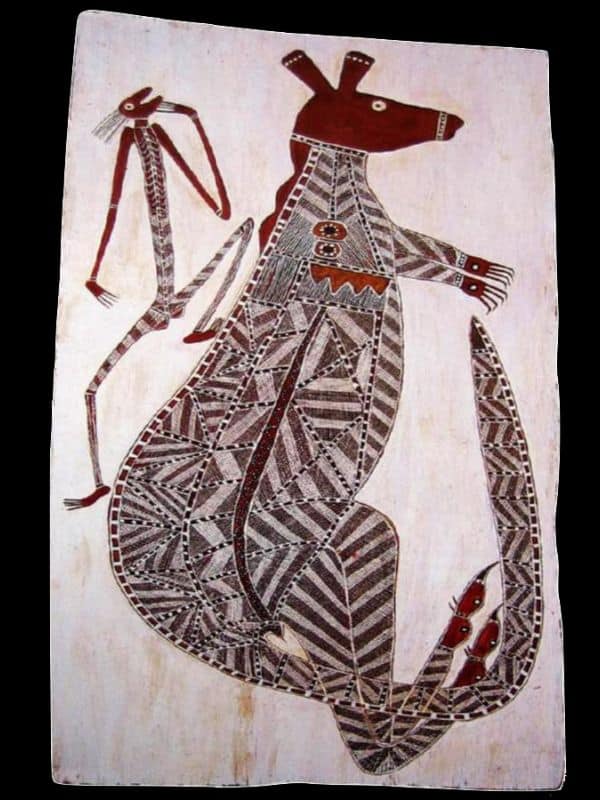
This story is also depicted by Dick Murrumurru and Spider Namirrki
The Echidna and the Turtle.
The Echidna and long neck turtle are important species that features in the Yabbadurruwa ceremony.
There is an important creation story of the battle between two powerful beings Ngarrbek and Ngalmangiyi. Ngarrbek had a young baby eaten by Ngalmangiyi. This lead to a legendary battle between the two powerful ancestors.
Ngalmangiyi had many spears and threw so many at Ngarrbek they covered his entire body. These spears later transformed into the spines and turned Ngarrbek into an echidna.
Ngarrbek however possed a magic grindstone which he smashed onto the body of Ngalmangiyi. The grindstone transformed into a hard shell and Ngalmangiyi turned into a Northern Snake-necked Turtle.
At the site where this epic battle occurred there is still a thicket of bamboo grass used for making spears.
This legendary battle is still acknowledged through ceremony. Kuninjku performs two major regional ceremonies, the Kunabibbi and Yabbadurruwa. The ceremony celebrates the major creation journey of creator beings. These creator beings travelled first north, and then returned south, through their country. Kunabibbi belongs to the Duwa moiety social grouping. Yabbadurruwa belongs to the Yirridjdja moiety.
The long neck turtle and Echidna are often depicted with interior decoration to emphasise its important ceremonial role.
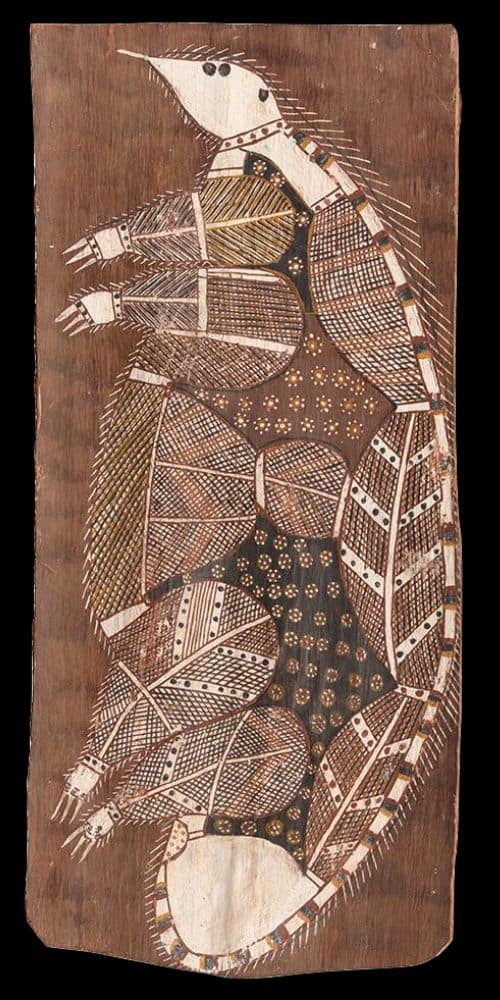

Namarrkon the spirit
Namarrkon is the lightning spirit, the source of the fierce tropical storms in Western Arnhem Land during the wet season. During the dry season, he lives in a billabong not far from Numbuwah, a sacred rock in Western Arnhem Land. Namarrkon’s dreaming site (djadjan) is a slight projection in the outline of the Arnhem Land escarpment. It consists of three fused pillars, one with a circular hole near the top. This is a few km NE of the Nourlangie Rock tourist site to the east of Koongarra saddle. Namarggon left one eye (the hole) to watch for the monsoon, but also to watch his estranged wife, whose home is a cave in a pillar near Koongarra. Namarrkondjadjan is well-named, as the promontory creates the earliest intense lightning storms.
During the monsoon, Namarrkon ascends into the clouds. Here he creates thunder by striking the hammers attached to his elbows and knees and ejaculates lightning. He sits in the clouds looking down and watching the people below. This is the time he gets angry and creates flashes of lightning, loud thunder and then torrential rain. From late October his thunder signals bush food is ready to harvest. This is the start of the ‘build-up’ season before the proper rains come.
Yirawala Painter of the dreaming
